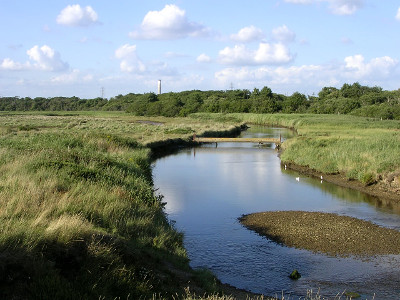The Earth Contents
4. Rock Cycle
The rock cycle occurs over long geological time scales
Physical and chemical weathering processes operate in tandem on rocks of all types (sedimentary, igneous and metamorphic) to separate their chemical constituents according to their solubility. Both the residual solids and the dissolved components are ultimately transported (in many cases after they have become incorporated into soil and then eroded) via surface water flow and rivers into the oceans. Here they create new marine sediments. Burial then converts sediments into new sedimentary rocks, which may in time become uplifted and again exposed to weathering processes on land. Also, since the centre of the Earth is hot enough to melt rocks, burial is accompanied by a rise in temperature (approximately 28°C per km) which first produces metamorphism and ultimately results in melting. Volcanic activity returns melted rock to the Earth's surface, and thereby initiates the erosion process once more.

Can you describe the rock cycle?